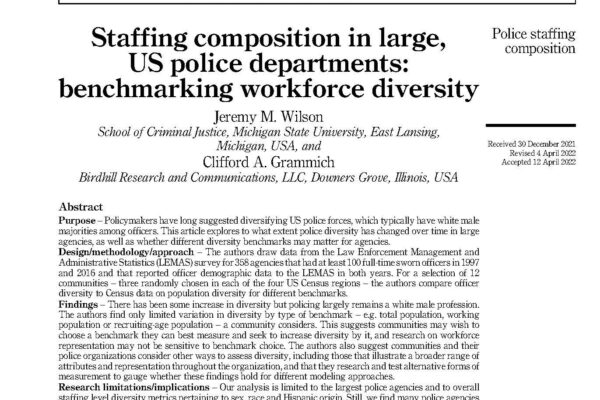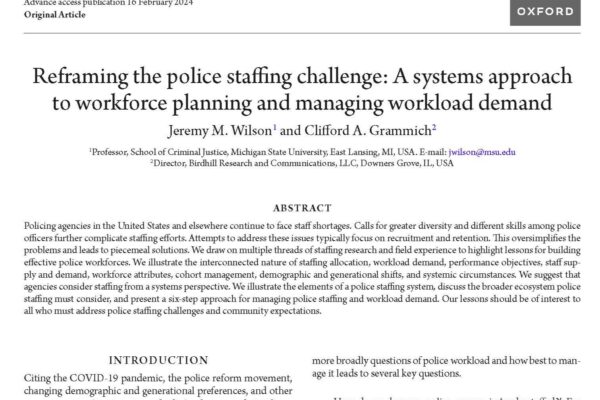Reframing the Police Staffing Challenge: Strategies for Meeting Workload Demand. COPS Office Community Policing Dispatch, Vol. 15(1), 2022.
Police staffing challenges are both acute and systemic. Those seeking to address police staffing shortages, whether for one or many agencies, must ask, and have answered, some challenging questions about the actual work the agency needs to complete, its desired approach to accomplish it, and the extent to which it is doing so most efficiently. While personnel are critical to any organization, staff is only one way to address the workload of police agencies. This discussion has introduced some examples…






